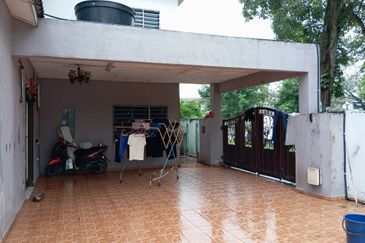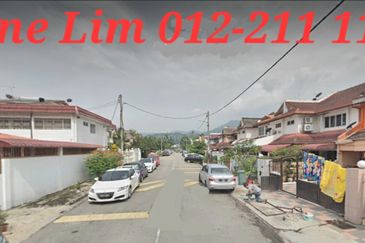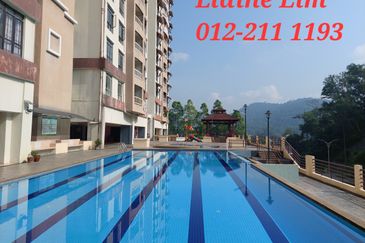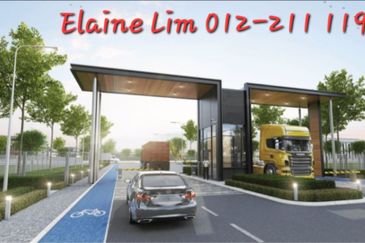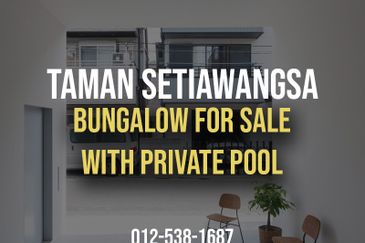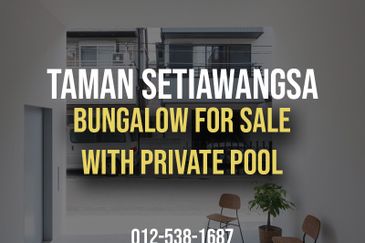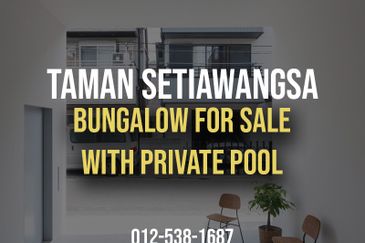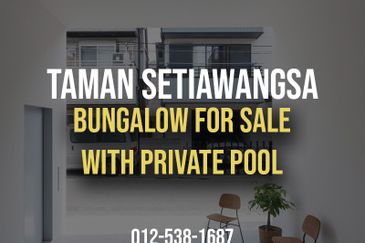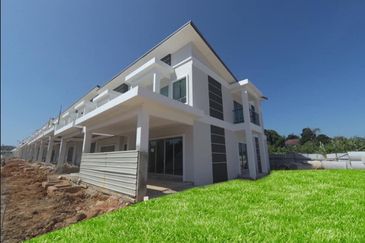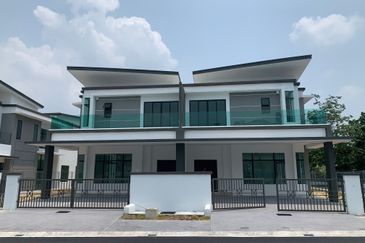SENIOR living is a relatively new concept in Malaysia. While the present nursing home industry focuses on the final stages of care (known to us as "old folks' homes",) and is run mostly by charitable organisations, senior living caters to the elderly who are able to live independently while having convenient access to shared healthcare services.
Various new concepts for senior living can range from resort-style homes with fun-filled recreational activities, active ageing, productive living and integration into the community.
Local pioneers in the business of senior living — such as Green Leaf Retirement Resort by Gracious Homes in Kuala Lumpur and Jeta Care's residential aged care facility in Johor Baru — even incorporate nursing services or a medical clinic with standby ambulances into their projects.
How strong is this demand?
Together with many other Asia Pacific countries, the Malaysian population will age rapidly after 2020. The number of Malaysians aged 60 years and older will rise from 2.1 million (7.4% of the population) in 2010 to 3.4 million (9.9%) in 2020. Evidence from economically-advanced countries indicate that healthcare spending per capita is about four times higher for people aged 65 and older, while findings by the United Nations show that the changes that occurred over 50 years in the West are being compressed into 20 to 30 years in Asia.
Lessons from other nations
As Malaysia is demographically "young" within the Asia-Pacific region, it can learn from "older" countries such as Hong Kong, Australia and Japan. The bulk of seniors do not enjoy high incomes, and governments of many countries in Asia-Pacific have subsidised retirement and nursing homes by providing cheaper land to build rented shelters — such as in Hong Kong. The Japanese and Australian governments provide subsidies for the elderly in the form of approved schemes.
With 24% of its population aged 65 and above, the world's highest ageing population, Japan, has a serious problem. The Japanese Ministry of Health estimates that the number of bed-ridden Japanese could swell to five million by 2025. Insurance pension schemes such as the Public Long-Term Care Insurance, play an important role in funding senior services for Japan's elderly — including home visits, day services and short-stay services.
Hospitalisation costs have risen dramatically over the years and the government is looking at alternative ways of caring for the elderly. From a national standpoint, healthcare services would be provided more effectively and at lower costs to the community if the elderly were clustered together. The elderly who need severe care are being moved to "special nursing homes for the elderly".
The Japanese government has given subsidies for the construction of "service-added homes for the elderly" that are relatively more affordable. The private sector has responded well and the market trend shows that there has been a sharp increase of "service-added homes for the elderly" in Japan.
These homes may offer 24-hour home-visits on a long-term basis for long-term care and nursing. Some can also come in the form of residential units — either for sale or for rent — with an attached office run by a senior healthcare operator that provides home visits, long-term care or outpatient long-term care.
Tenants of the office can also include clinics and dispensing pharmacies. With the number of elderly patients on the rise, the government is under pressure to look into other innovative and less costly ways of treating patients with dementia. As the industry is labour-intensive, robotics are likely to be introduced to reduce this dependency.
While Singapore's elderly currently forms only 9.9% of its total population, this number is expected to rise to 19% by 2030. The World Health Organisation defines an aged society as one where 14% or more of the population is aged 65 years and above.
In less than five years, Singapore is forecast to become an aged society. The Singapore government has built some homes for the elderly aged 60 and above for a leasehold period of 30 years. Realising that the country has to grapple with increasing numbers of the elderly, the government has welcomed the initiatives of non-government organisations (NGOs), partially supporting them financially but most importantly, giving credit to the NGOs for being model caregivers for the elderly.
Recognising the strong demand for independent living by seniors, the private sector and NGOs have been innovating to sustain their operations and expand their reach. A good example would be Hong Kong Sheng Kung Hui Welfare Council — a large social service organisation that has been around for more than five decades. Some of its services have only become profitable over the past 10 years as it pioneered and innovated its services to meet rising demand in Hong Kong, China and Macau.
For the profit-minded, finding a profitable and sustainable business model for senior living has not been easy, particularly for countries which have high land cost. Nevertheless, a few talented operators have emerged and these have stood the test of time. Some include operators in China and India who target middle-income seniors, and those in Australia who target high-end seniors.
Subsidies for ageing societies have caused government debts to balloon and governments are looking for more sustainable solutions. In Malaysia, the government is encouraging innovative senior living business concepts to flourish under the Economic Transformation Programme.
Malaysia has the perfect proposition for senior living for both its own ageing population and "Malaysia My Second Home" retirees. The latter group is attracted by the relatively low cost of living and conducive climate of the country. In fact, Malaysia was voted third on the list of the world's top Retirement Havens 2013, according to the magazine International Living. Moreover, the cost of both land and labour is considerably cheaper here.
While the demands of an ageing population will rise significantly, developers should not rush headlong into providing facilities for the elderly without considering whether the models overseas are suitable and can be adopted here. A developer who wants to provide senior living facilities, or a retirement home, needs to consider the Malaysian culture and stigma associated with sending the elderly to an old folks' home.
More importantly, the local developer must ask some basic questions, "Who do you want to cater to? Is it the upper, middle or lower income elderly?" Very often, the ultra-rich will have the means to renovate their homes to cater to their needs and may not want to be restricted to standardised living spaces. The middle class may have a more compelling reason to move into cluster homes and save on nursing, ambulance services and other costs.
China will eventually have an ageing population that grows faster than that of Japan. The government has encouraged developers to build senior living homes. However, some of the homes built in suburban areas have seen poor take-up rates.
A more suitable model could be that of Indonesia's, where a developer integrates a small portion for senior living into his township, allowing the younger generation to stay in the vicinity and provide assurance of their accessibility.
Veena Loh is currently the general manager of MPI. She has both public and private sector experience in the academic, government and financial market. She was previously a Senior Fellow at ISIS, an economics consultant to NEAC and senior analyst at GK Goh Stockbroking Pte Ltd.
This story first appeared in The Edge weekly edition of June 17-23, 2013.
TOP PICKS BY EDGEPROP
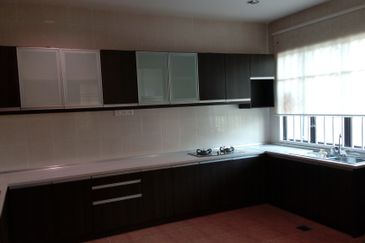
Taman Bukit Impiana
Country Heights, Selangor
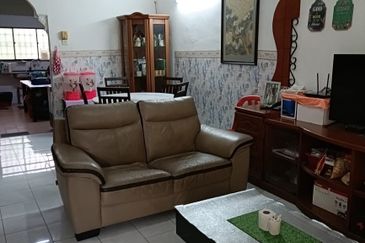
Bandar Bukit Tinggi
Bandar Botanic/Bandar Bukit Tinggi, Selangor
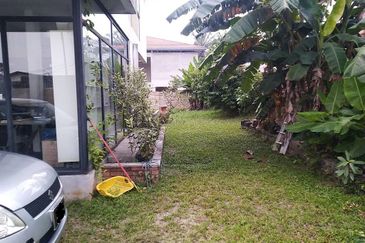
Seksyen 16, Petaling Jaya
Petaling Jaya, Selangor

Bandar Puncak Alam
Bandar Puncak Alam, Selangor

Bandar Puncak Alam
Bandar Puncak Alam, Selangor
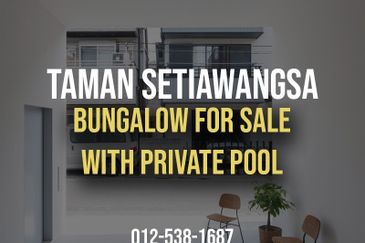
Taman Setiawangsa
Taman Setiawangsa, Kuala Lumpur

Taman Setiawangsa
Taman Setiawangsa, Kuala Lumpur
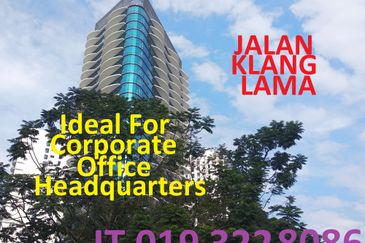
Jalan Klang Lama
Jalan Klang Lama (Old Klang Road), Kuala Lumpur

